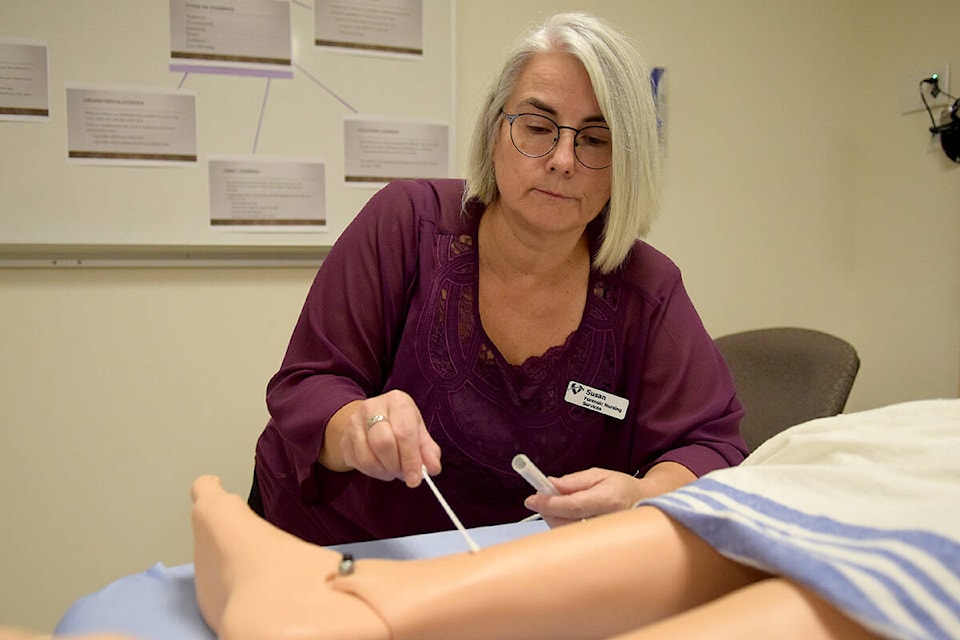Giving nurse practitioners a greater role in Alberta’s health care system is good news — but would be better if education funding was attached, said a dean at Red Deer Polytechnic.
“It’s disappointing that there’s nothing about education, or putting more funding in… but maybe that will be the next step,” suggested Sharon Hamilton, RDP’s Dean of Health and Wellness, which includes the nursing program.
Hamilton was reacting to Wednesday’s announcement that the UCP government is expanding opportunities for nurse practitioners to give Albertans greater access to a regular primary care provider in the midst of a doctor shortage.
Alberta’s government stated it will support nurse practitioners who want to open their own clinics, “take on patients and offer services based on their scope of practice, training and expertise.”
Since nurse practitioners can provide about 80 per cent of the medical services a family physician provides, “this will be reflected in the compensation model” stated the government. The UCP will give $2-million over the next three years to the Nurse Practitioner Association of Alberta will help to implement the new compensation model, recruit more nurse practitioners to participate, and provide supports to set up their clinics.
“Nurse practitioners are highly trained and valued medical professionals. By enabling them to open their own clinics, we are ensuring Albertans can more easily access the care they need,” said Premier Danielle Smith.
Nurse practitioners essentially complete a master’s degree after getting their registered nursing credentials and working in the field for two years. They are trained to assess, diagnose, treat and interpret diagnostic tests, prescribe some medications, make referrals to specialists, and manage a patient’s overall care.
More serious illnesses, such as cancer, will still require a physician’s care, and Hamilton believes nurse practitioners would work in partnership with doctors in those cases. Exactly how this relationship will work, and what can be done to encourage more nurse practitioners to open their own clinics remains vague. Hamilton awaits more details.
But she’s glad the province is looking at increasing compensation, as “you would expect the same pay if they are doing what doctors do.”
Alberta has lagged behind some other provinces in freeing up nurse practitioners to practise the skills they have, Hamilton added. She hopes the government will follow up by providing grants to encourage nurses to go back to school and get practitioner training as well as adding more seats to nursing programs.
The Alberta NDP stated this change will not help any Albertan get primary care “anytime soon.” They faulted the government for not giving adequate funding support to any front-line health care workers, and for failing to support family doctors or attract new ones to work in the province.
